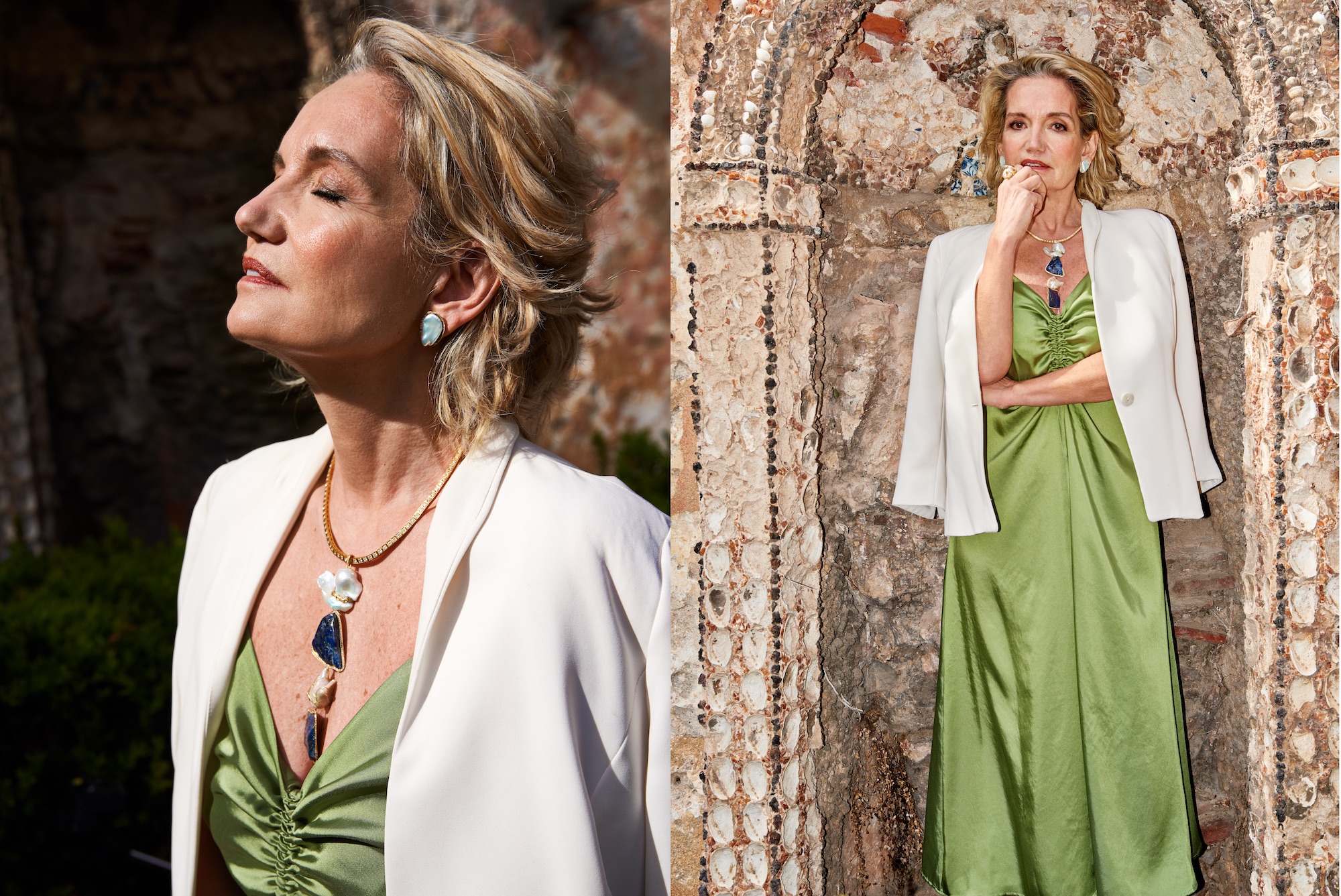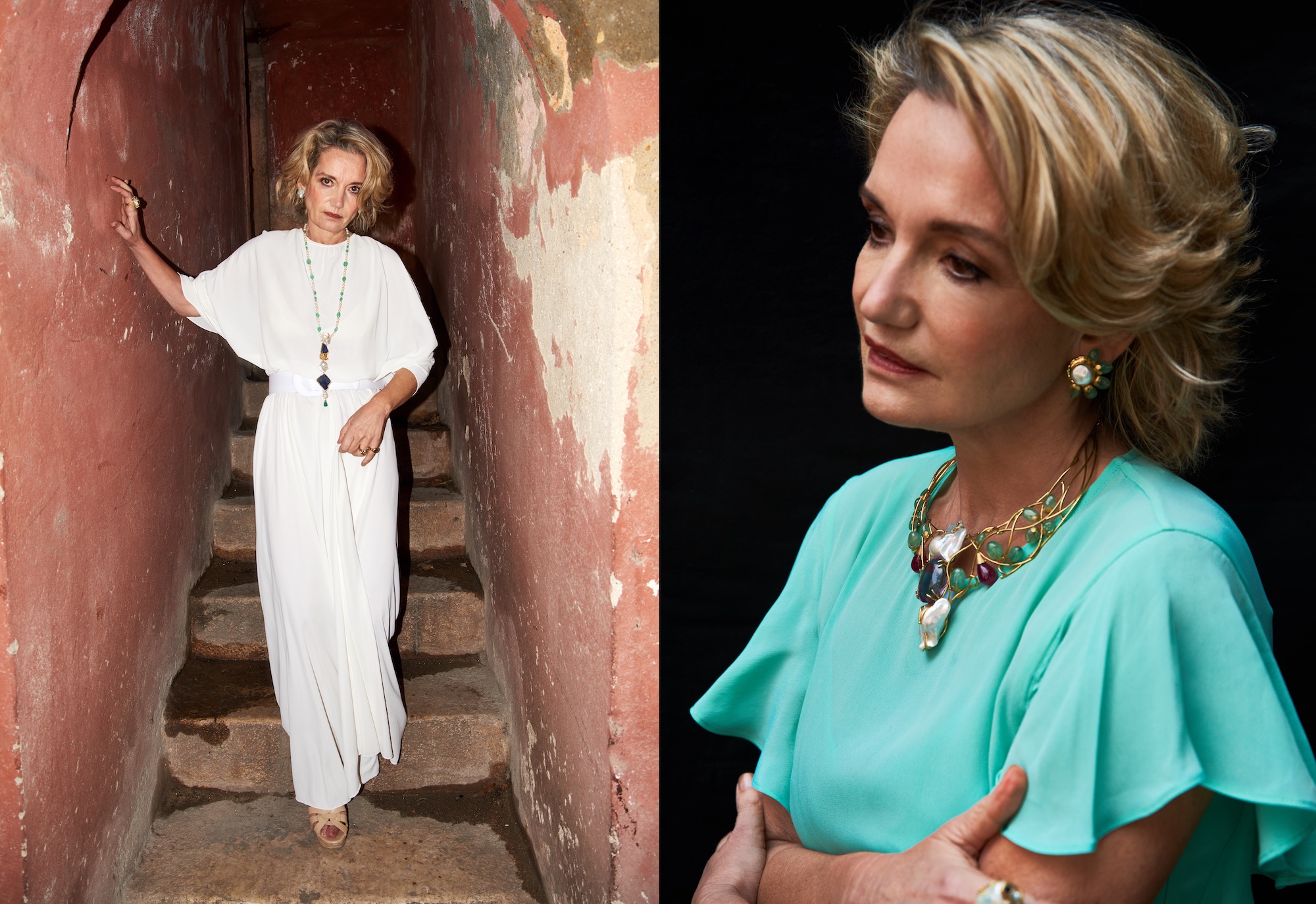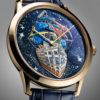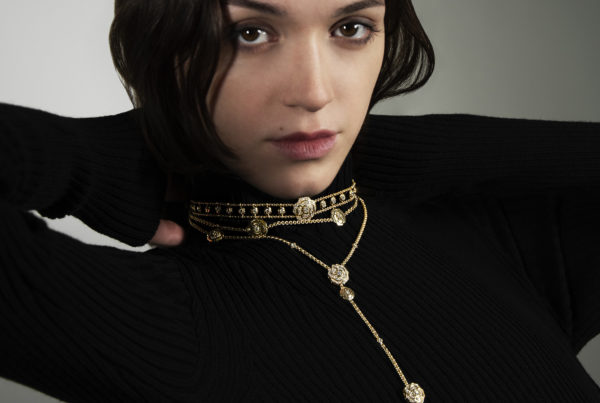Maria João Bahia, the magician
The Portuguese jeweller creates jewellery and organic objects inspired by the architecture of Lisbon and its light. She mixes precious and non-precious materials and takes us into a magical world. Isabelle Cerboneschi

When you walk down the Avenida da Libertad in Lisbon, you suddenly find yourself in front of a four-storey pombalino building with an amaranth-red façade. A place that intrigues and invites you to lean towards its windows where you discover treasures. Your gaze falls on jewellery like organic sculptures, mixing precious materials – gold, diamonds, rubies, sapphires – with others that are less precious, such as mother-of-pearl, wood and fine stones. They are signed Maria João Bahia. For the past thirty years, the jeweller has been creating talismanic jewellery, urban elf ornaments, trophies, medals and enchanting pieces for the table.
Her musician grandfather and her sculptor father gave her a taste for beauty. She oscillated a little between law and goldsmithing, which have nothing to do with each other, but the laws of creation took over from the judicial syllogism and, in 1985, she set up her first workshop in Lisbon. Maria João Bahia opened her sunset-coloured shop in 2004. It was in this atypical location that we met.
INTERVIEW
You studied law. What led you to jewellery?
Maria João Bahia : I studied law because that’s what all my friends had chosen. My university years were a lot of fun: we partied a lot. I really liked international law and goldsmithing and studied both at the same time, while learning drawing at the Fine Arts School, but after three years things got more serious at university and I left. I was born in an artistic environment: my father is a sculptor and I lived surrounded by art, sculpture and painting. It was part of my normality. I remember one day, when I was about five years old, my father was finishing a monumental sculpture in his studio and he invited me to sign it as well, telling me that no one would know. These are unforgettable moments…
Jewellery was a childhood dream?
Yes. When I was twelve years old, I used to make jewellery and belts with stones, pearls, shells, ropes,… I used to do it in a very natural way and I sold them in the shops under my parents’ house. My mother’s friends used to buy them. I don’t remember keeping any.
Did you have a master?
Yes, my first master was my father, but I wasn’t aware of it at the time. When I decided to create jewellery, I wanted to learn the trade in a workshop in the north of Portugal, which did goldsmithing. I learnt this craft and how to create my own tools with a master called Manuel Alcino. Goldsmithing involves many secrets that are normally passed on within the same family. But he agreed to teach me. Then I went to a jewellery workshop in Lisbon, where the work was more precise, smaller: I wanted to learn the know-how so that I could develop it according to my designs and the jewellery I had in my head. If you just apply the known rules, you create soulless jewellery.
You also create tableware, cutlery and bags. Is it to bring beauty into the everyday life?
I started creating certain pieces because I needed them and I couldn’t find them on the market. Before the revolution, in my family, we used silverware in our daily lives. But then everything changed. I asked my mother why we didn’t use silver cutlery for dinner anymore. She said that it was difficult to clean. Years went by and I looked for a solution. I created a silverware set that can be machine washed and used every day. My secret? I had them hammered, so you can’t see the flaws. They are always impeccable.
Your creations are organic. What are your sources of inspiration?
Nature and Portuguese architecture. Our pavements are beautiful with their black and white cobblestone designs and I have created many collections inspired by them. I also like the wrought iron work. We are lucky to have the most beautiful light in the world in Lisbon. I don’t know if it’s because of the white of the pavements and the blue of the ocean, but it gives a very special luminosity.
For some jewellery, you use a typically Portuguese technique: filigree. Is this a way of keeping an ancestral know-how alive?
We use the ancient technique of filigree, but in a different way. This famous gold work, in which two wires no bigger than a hair are twisted together to create patterns, dates back to the Phoenicians. I have simplified it in order to obtain a more airy, refined effect.
Is it difficult to find craftsmen capable of using this technique?
No, what is complicated is to find people who know how to put soul into what they do.

You have set up your shop and workshops in a typical pombalino building. What is its history?
In 1755, there was a terrible earthquake in Lisbon and part of the city collapsed. The Marquis of Pombal had some areas and the city centre rebuilt. He gave his name to an architectural style; the Pombalin style. But I don’t know the particular history of this building.
One can feel that your jewels go beyond adornment. Do you think that a piece of jewellery can have a magical power?
Yes, I am convinced of that. For many years I wondered why people bought my jewellery because they didn’t need it: you can live without it. Clients sent me letters, gifts, bouquets, but I didn’t understand why: I had done my job. Until one day, one of my clients, who had a very important position in the government, confided in me that before an important meeting, she came to me to buy a piece of jewellery. She was looking for a special piece to dominate the meeting. It was an object of power for her. I realised that she was not the only one. One of my clients was desperate to get one of her necklaces repaired so she could go to an important medical appointment: she told me it gave her strength. Most women buy jewellery for a special occasion. This gives meaning to my work.
Your objects take us into a wonderful world. Do you feel you are a bit of a magician?
Thank you! If I am, it’s totally unconscious. I need to feel the object: I need to establish an almost alchemical relationship with my jewellery. They are not anchored in an era, they don’t follow fashions: they are of all times at once.



























